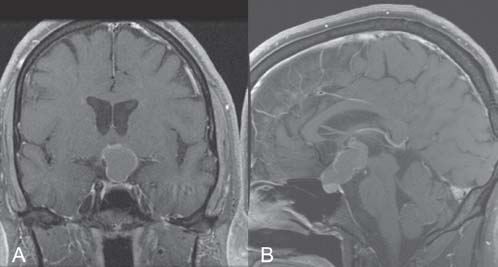Case 13 Craniopharyngioma: Endoscopic Approach Daniel M. Prevedello, Amin B. Kassam, Paul Gardner, Arlan H. Mintz, Carl H. Snyderman, and Ricardo L. Carrau Fig. 13.1 (A) Coronal and (B) sagittal T1-weighted magnetic resonance images of the brain with contrast showing a suprasellar mass. You decide to approach the tumor via an endoscopic endonasal route.

 Clinical Presentation
Clinical Presentation
 Questions
Questions
 Answers
Answers
13 Craniopharyngioma: Endoscopic Approach
Case 13 Craniopharyngioma: Endoscopic Approach Fig. 13.1 (A) Coronal and (B) sagittal T1-weighted magnetic resonance images of the brain with contrast showing a suprasellar mass.

 Clinical Presentation
Clinical Presentation
 Questions
Questions
 Answers
Answers
< div class='tao-gold-member'>
Only gold members can continue reading. Log In or Register to continue
Stay updated, free articles. Join our Telegram channel

Full access? Get Clinical Tree


